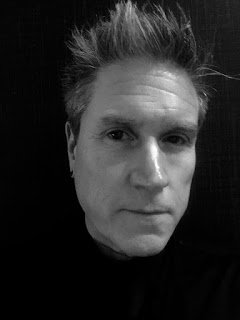Barry McGeough
FUSE 2017 presenter Barry McGeough is Group Vice President at the Innovation Next division of PVH, one of the world's largest importers of apparel, which includes iconic brands Calvin Klein, Tommy Hilfiger, Izod, and Speedo. Barry's extensive experience includes directing athlete and human biomechanics-inspired product development and innovation teams at Teva, The North Face and Speedo.
As a preview to his presentation, Barry shares his insights on the impact of collaboration and innovation on designing wearable technology:
Peggy L. Bieniek, ABC: What inspires your product development innovations?
Barry McGeough: Everything from David Hockney and his approach to digital expression from an analogue perspective, to business leaders like Elon Musk and Kevin Plank who build worlds of business and product possibilities off the back of sheer audacity, to thought leaders like Malcolm Gladwell that challenge all our current ways of thinking conventionally. It's all about being pathologically curious, finding the problems that vex us in life and the business of product and consumer experience, and using that curiosity to create the elegant solution.
Barry McGeough: Everything from David Hockney and his approach to digital expression from an analogue perspective, to business leaders like Elon Musk and Kevin Plank who build worlds of business and product possibilities off the back of sheer audacity, to thought leaders like Malcolm Gladwell that challenge all our current ways of thinking conventionally. It's all about being pathologically curious, finding the problems that vex us in life and the business of product and consumer experience, and using that curiosity to create the elegant solution.
PB: What role does collaboration play in the design-production relationship?
BM: Sounds stupidly obvious, but collaboration is everything. At Innovation Next, we are now collaborating with everyone as we explore how connected apparel becomes part of the IoT. We are working with universities like NC State and MIT, confederations like Advanced Functional Fabrics of America (AFFOA), schools like University College London, Parsons in New York, Hong Kong Polytechnic, as well as being actively engaged in our partnerships in Silicon Valley, in the start-up community, and looking outside our industry into the Defense and Biotech industries. We even collaborate on industry-wide initiatives with our competitors.
BM: Sounds stupidly obvious, but collaboration is everything. At Innovation Next, we are now collaborating with everyone as we explore how connected apparel becomes part of the IoT. We are working with universities like NC State and MIT, confederations like Advanced Functional Fabrics of America (AFFOA), schools like University College London, Parsons in New York, Hong Kong Polytechnic, as well as being actively engaged in our partnerships in Silicon Valley, in the start-up community, and looking outside our industry into the Defense and Biotech industries. We even collaborate on industry-wide initiatives with our competitors.
Everyone should be empowered to be their creative best selves. The innovation process works best when it's smart: when its goals are targeted, its desired outcomes are clear, and a path to success is defined. Innovation and the idea of investing in pure R&D research, while well known in industries like consumer electronics, pharmaceuticals, and the auto industry, is very new to the apparel sector.
As such we are, all of us, from Under Armour to Adidas, defining what these investments could mean to us as we drive to bring relevant, practical solutions that help our brands build their unique competitive edge and drive revenue and profit. With the onset of fast fashion and the demands of an immediate gratification culture, we can no longer succeed using old go-to-market paradigms. We must now look outside our comfort zones and even outside of our industry to find these unique solutions. And that requires strategic collaboration.
PB: What are some notable products you've helped to create?
BM:
BM:
- Berghaus Bioflex load bearing distribution system that allows the pack to move with you as you backpack, lightening the load through an elegantly engineered system
- Speedo Elastomeric Fins, based on whale fin tubercles for greater propulsion
- Speedo Elastomeric Goggles with super comfort grooves for no-raccoon eyes, super comfortable swim and wide field of vision
- The North Face Single Track Trail Running Shoe, X Dome cushioning system. Outside Magazine Gear of The Year award winner.
- Berghaus, UK Vapour Claw ' award-winning trail runners in the UK
PB: What do you see as the next phase of wearable technology?
BM: In the short term, we as an industry must solve for the problems of power generation and power storage before we can fully integrate apparel into the Internet of everything.
BM: In the short term, we as an industry must solve for the problems of power generation and power storage before we can fully integrate apparel into the Internet of everything.
But if we believe as we do, as the World Bank does, that by 2020 there will be 8 billion people on Earth, and there will be 50 billion connected devices and 95% of the world's population will be connected to the Internet, then we also must believe that in a world of smart everything, from cars to phones to thermostats to wearables, that no one will accept smart EVERYTHING and dumb clothes.
Our expectations for connected apparel will be commensurate with our expectations for functionality in all other areas of the consumer and connected experience. And who better to drive this than PVH, who make products in multiple brands that cover the human body every day. Connected apparel is a 'how,' not an 'if,' and we are building these gateway solutions today.
PB: What will people gain from attending your conference presentation?
BM: My presentation will specifically discuss the intersection of innovation and biomimicry. As an alum of the outdoor industry, I have been fortunate to cross-pollinate the ideas put forward by Janine Benyus who wrote Biomimicry: Innovation Inspired by Nature, the primer for the concept of biomimicry, and use some of those concepts to build training aids that help strengthen Olympic athletes for one of the world's most iconic brands. The inspiration we get for simple yet powerful solutions from the natural world is in its infancy. I will showcase how this insight inspires this and other industries.
BM: My presentation will specifically discuss the intersection of innovation and biomimicry. As an alum of the outdoor industry, I have been fortunate to cross-pollinate the ideas put forward by Janine Benyus who wrote Biomimicry: Innovation Inspired by Nature, the primer for the concept of biomimicry, and use some of those concepts to build training aids that help strengthen Olympic athletes for one of the world's most iconic brands. The inspiration we get for simple yet powerful solutions from the natural world is in its infancy. I will showcase how this insight inspires this and other industries.
Want to hear more from Barry? Join us at FUSE 2017. Learn, network and share best practices with the most influential leaders in brand, design and marketing. Stay connected at #FUSEdesign.
Brilliance@Work profile originally published on www.starrybluebrilliance.com
Peggy L. Bieniek, ABC is an Accredited Business Communicator specializing in
corporate communication best practices. Connect with Peggy on
LinkedIn, Twitter, Google+, and at www.starrybluebrilliance.com.


